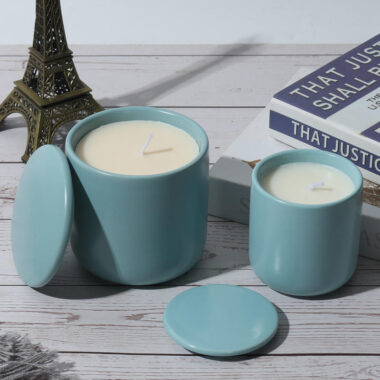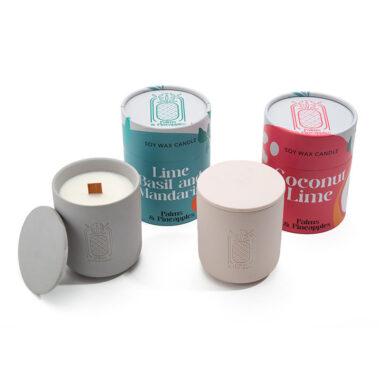🛠️ Why Custom Candle Jars Require Careful Planning
Launching a custom candle jar project goes beyond choosing shapes and finishes. It involves tooling investments, production MOQs, and realistic lead times. Many new buyers underestimate these factors, resulting in cost overruns or delayed product launches.
By understanding the structure of custom development, brands can better align with supplier capabilities and bring new designs to market smoothly.
📏 MOQ: The Foundation of Custom Orders
MOQ (Minimum Order Quantity) is the minimum number of units a factory requires to run production efficiently. For custom jars, MOQs are typically higher because:
-
New Tooling Costs: Factories need to amortize mold investment over a larger volume.
-
Raw Material Purchases: Colored glass, ceramic glazes, or luxury coatings require bulk procurement.
-
Production Efficiency: Small runs disrupt line scheduling and increase per-unit costs.
👉 Brands sourcing regular SKUs often rely on Candle jar wholesale to meet lower-volume demand, while moving into custom projects when scaling up or launching premium ranges.
⚙️ Tooling: The First Big Investment
Tooling—mainly molds—represents the largest upfront expense in custom jar development.
-
Glass Molds: Precision steel molds shaped for specific jar geometry. Lead time: 25–40 days.
-
Ceramic Molds: Handcrafted plaster molds for slip casting, often requiring multiple adjustments. Lead time: 30–50 days.
-
Customization Options: Embossed logos, special lids, and decorative features may require additional inserts or secondary tooling.
A well-made mold ensures consistent jar dimensions, proper wall thickness, and compatibility with lids.
⏱️ Lead Time Breakdown
Custom candle jar projects take longer than standard stock orders. Typical timeline includes:
-
Design Finalization (1–2 weeks): CAD drawings, size specs, and finish selection.
-
Tooling Production (4–6 weeks): Mold creation and trial testing.
-
Sample Approval (2–3 weeks): Pilot samples produced, tested, and adjusted.
-
Mass Production (6–10 weeks): Full-scale manufacturing after final approval.
-
Logistics (4–6 weeks): Sea freight and customs clearance.
👉 From start to finish, brands should expect 16–24 weeks total for a new jar, depending on complexity.
📦 Pilot Runs & Quality Testing
Before mass production, factories often run pilot batches using the new mold. This stage is crucial for:
-
Checking jar weight and thickness consistency.
-
Testing decoration (printing, spraying, hot stamping).
-
Verifying wick fit and burn safety with wax poured samples.
Skipping this step increases risk of defects in bulk production. Reliable factories will insist on pilot runs before scaling.
💰 Cost Considerations in Custom Development
Buyers should prepare budgets for:
-
Tooling Fee: One-time cost, usually recouped over repeat orders.
-
Decoration Surcharge: Custom coatings or prints often add $0.10–$0.30 per unit.
-
Higher MOQs: Typical MOQ starts at 3,000–5,000 pcs for custom glass jars, higher for ceramics.
To keep costs under control, some brands combine stock vessels with custom decoration—an approach that lowers tooling fees while still creating unique packaging.
🌍 Choosing the Right Supplier
Not all factories handle complex custom projects equally well. Key traits of a strong partner:
-
In-house mold workshop for faster tooling.
-
Experience with international compliance standards.
-
Stable production lines capable of repeat quality.
Brands looking for flexibility often explore alternatives like tins, handled by Candle Tins Manufacturer, which allow custom finishes with lower tooling costs.
✅ Final Takeaway
Custom candle jars elevate brand identity but require strategic planning. Buyers should align MOQ, tooling investment, and lead time expectations early in the process to avoid costly delays.
By working with reliable manufacturers who guide you through every stage—from CAD design to mold testing—you can transform creative ideas into consistent, retail-ready products.









